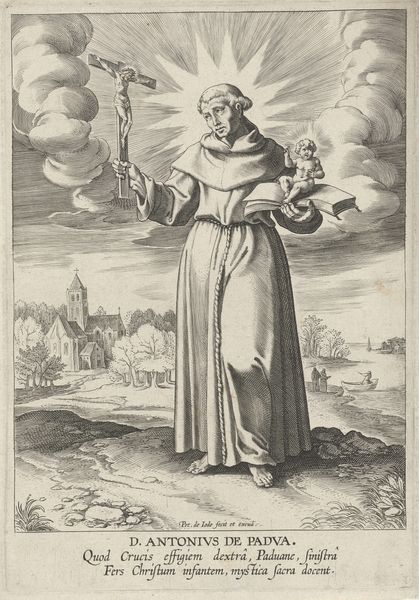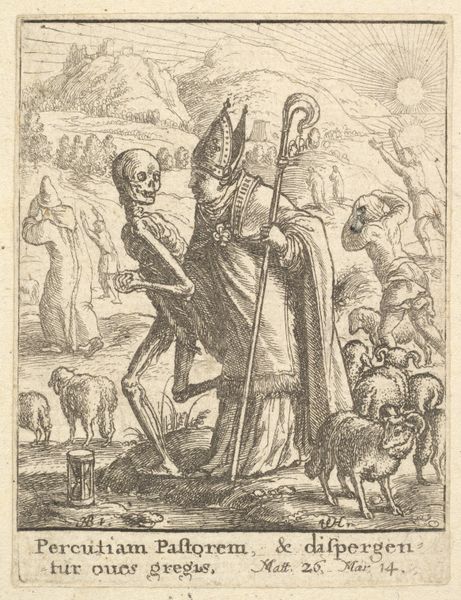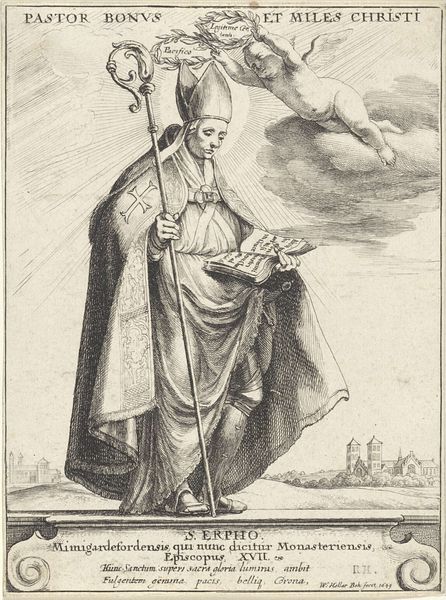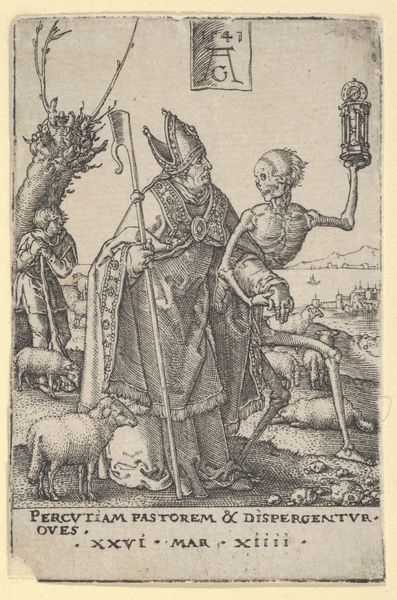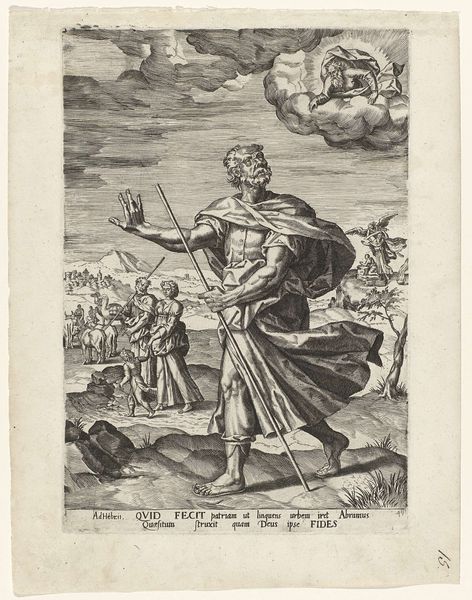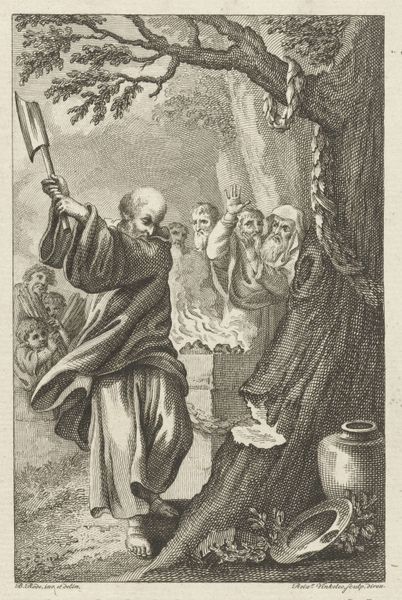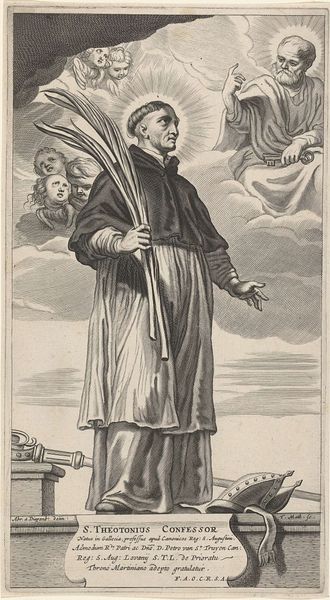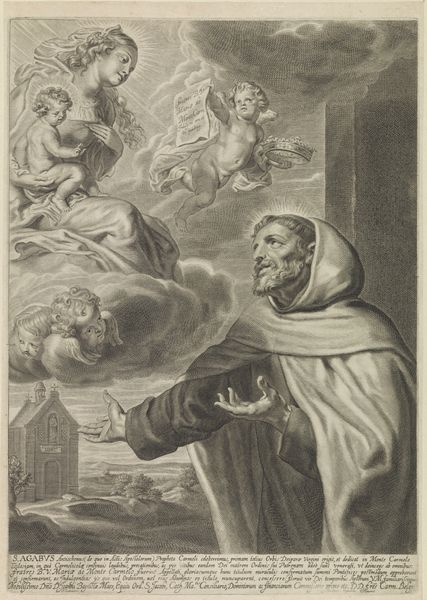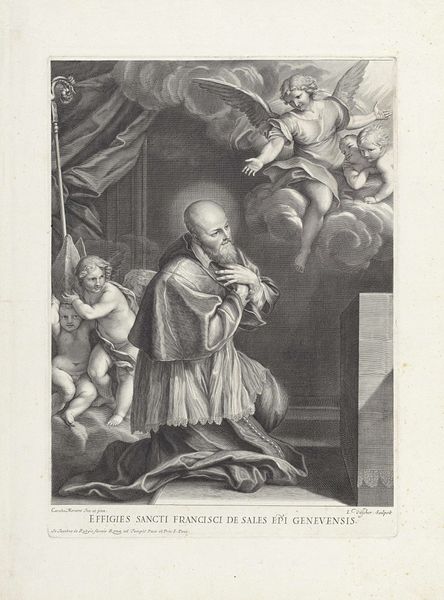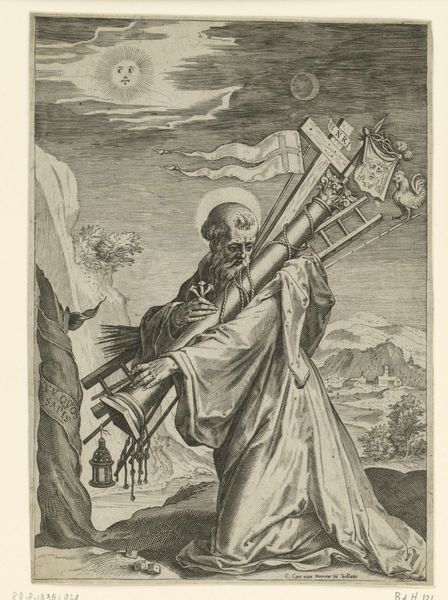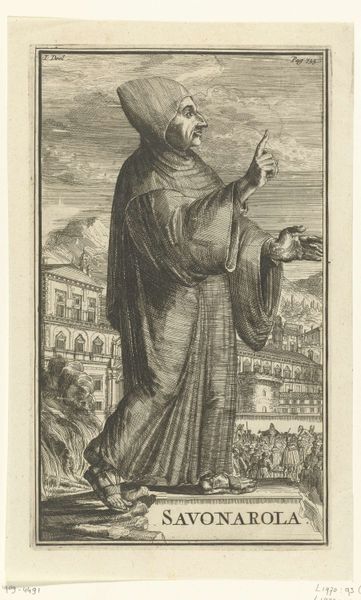
print, engraving
#
baroque
# print
#
old engraving style
#
figuration
#
history-painting
#
engraving
Dimensions: width 200 mm, height 282 mm
Copyright: Rijks Museum: Open Domain
Curator: Look at this detailed engraving, “Heilige Dominicus,” by Jan (II) Collaert, dating from somewhere between 1576 and 1628. What strikes you first? Editor: It's intense! All those figures and details packed into a single print – the saint towering over those writhing demonic figures is very compelling! The dichotomy of saintliness versus wickedness really jumps out. Curator: Exactly! The image presents Saint Dominic not only as a preacher, clearly shown with the book he holds, but also as a figure of immense power over heresy. His other hand holds a banner emblazoned with the Virgin Mary. Notice, too, how Christ looks down from the sky. It is so densely packed with layers of iconography. Editor: Right, and if we unpack that a little bit more, that representation of Saint Dominic can be understood within the socio-political context of the counter-reformation in Europe. It visualizes and asserts power structures. The suppression of perceived evils through religious imagery. And let’s talk about the serpent under his foot, classic iconography representing triumph over evil. Curator: Yes, Collaert uses a variety of potent symbols to reinforce the Church’s stance during this turbulent era. The dog with the torch represents Dominic’s order bringing light, that is, divine truth, to the world. Editor: And it also casts quite a judgmental shadow! It’s important to examine the perspective being presented. Who defines what is “evil” in this artwork? Curator: That’s an insightful question. It’s a window into the anxieties of the period and the determination to restore Catholic dominance. It really gets us thinking about visual propaganda and how it works through the power of suggestion and imagery. Editor: Indeed, the choice of engraving helps in distribution to propagate those narratives broadly to reinforce identity and control. Food for thought in our media saturated moment! Curator: Definitely, It really allows one to recognize the long continuity of symbols across time to understand how images perpetuate the concerns of any period. Editor: It encourages us to consider how visual culture still works to advance certain perspectives today, and in a way, consider art as cultural messaging across the ages.
Comments
No comments
Be the first to comment and join the conversation on the ultimate creative platform.
